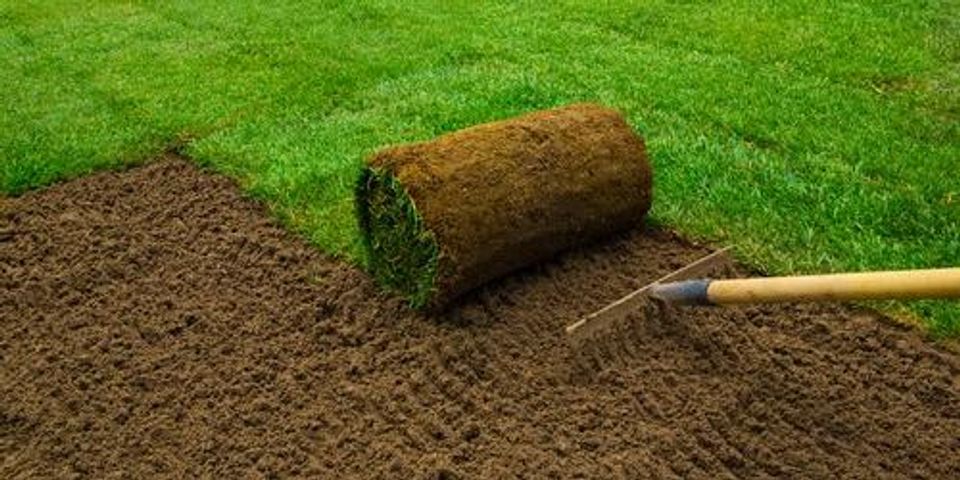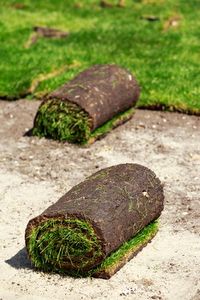
The best time to lay sod is typically during early spring to mid-fall when the temperatures are warm to moderate. Extended temperatures below freezing can destroy sod grasses that haven’t developed a root system. However, warm season varieties such as Bermuda grass, St. Augustine, and Zoysia can be installed year-round in areas that experience mild winters. Below, are several tips for installing sod during those cooler temperatures.
How to Ensure Optimal Sod Installation in Winter
1. Less Frequent Watering
Sod grass laid in the summer requires an extensive watering schedule. During the winter, it’s only necessary to water sod once after the installation is completed. The ground temperature usually remains cool enough to provide adequate moisture to the soil. If the temperature increases or there is a drop in precipitation for two weeks, the sod can be watered a second time to keep the soil moist.
2. No Fertilizer Needed
 While a starter fertilizer application is appropriate during warm months to help the sod grow, it’s not required during winter. The reason for this is because the grass is dormant during winter and not actively growing. When warmer weather arrives in spring, you should apply the starter fertilizer.
While a starter fertilizer application is appropriate during warm months to help the sod grow, it’s not required during winter. The reason for this is because the grass is dormant during winter and not actively growing. When warmer weather arrives in spring, you should apply the starter fertilizer.
3. Soil Stabilization
If erosion is a concern, lawn sod will prevent run off almost immediately and stabilize the soil. Sod provides a cover for the ground, which reduces the loss of soil during inclement weather. The turfgrass installation will quickly remedy the messy bare earth and improve your home’s curb appeal.
With the proper installation, laying sod during the winter is a good alternative to the warmer months and an excellent investment. Contact the specialists at Arkansas Sod & Turf Farm in North Little Rock to order your turf. They carry the best grass varieties, including Zoysia and St. Augustine. Call (501) 753-5377 or visit the company online to learn more about their services.
About the Business
Have a question? Ask the experts!
Send your question

